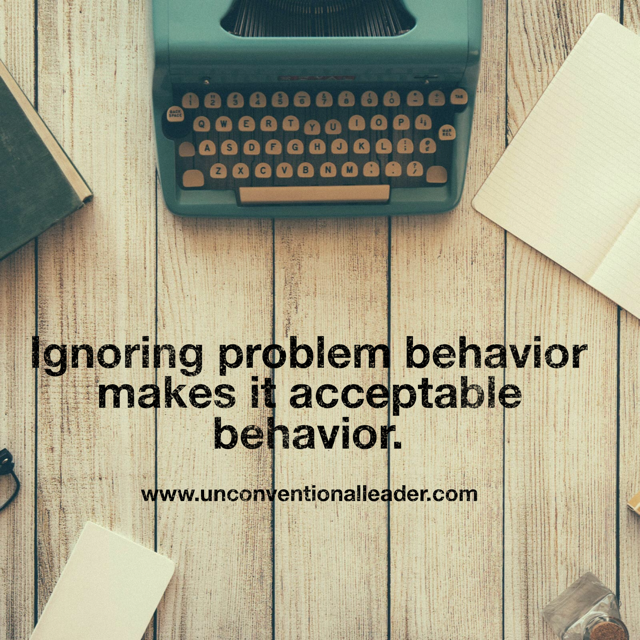
How Do You Deal With The Bad Apple?
 Behavior modification made easy…
Behavior modification made easy…
Let’s face it, we can pick our nose but we can’t all pick our teams.
It would be great to be able to “Kingdom Build” (as my old boss would say) but, sometimes, we get a legacy team…one that has been around, has a way of doing things, and is set in their ways. Ninety percent of the people on that team may be GREAT but, undoubtedly, you’ll get one or two “bad apples.” It could be their negativity, lack of work ethic, or sarcastic nature that makes them rotten to work with. Regardless, the entire team feels the effect and is brought down as a result. You’ve tried talking, reasoning, and counseling…what’s a leader to do?
I’m glad you asked (okay, I asked and I’m going to answer….I’m writing this, okay?). I love B. F. Skinner and his theories on operant conditioning because, for me, they just make sense in trying to shape the behavior of people. Skinner coined the term operant conditioning; it means roughly the changing of behavior with reinforcement which is given after the desired response. If you have behaviors you want to change, I believe that the entire office is a Skinner Box and you’re the scientist that can get what he wants if you use the right reinforcers. Here’s how to deal with that bad apple using Skinner as a guide.
OPTION ONE
Reinforce the behavior you want to see with a reward (thereby trying shape the behavior into one you want to see again). Let’s say Billy Buttface (our bad apple) actually says something positive at a meeting. That’s when you would stop, acknowledge it, and say what a good idea it was. Or, Billy is constantly late on getting his TPS reports in. One day, out of the blue, he turns in his reports early and you give him a piece of candy corn. Do this often enough and the behavior you want to see will be the one repeated more often.
OPTION TWO
Make Billy’s work life a living hell until he shows the behavior you want to see. This would be a good example of negative reinforcement (the removal of an unpleasant reinforcer when the desired behavior is given). Let’s go back to our TPS reports. Billy is still late on his reports and you REALLY need him to get them done on time. To help this along, you visit him every 30 minutes to ask how it is going and when he’ll have them done. Besides being extreme micro-managing, this is going to be a constant unpleasant experience for BIlly (not only because he hates but also because your breath smells from the fish tacos you ate at lunch). When Billy gets his reports in on time, you go away, Billy feels relieved, and the behavior is repeated.
OPTION THREE
You can punish Billy. Punishment is a little different from reinforcing behaviors because it is used eliminate a response rather than increase it. Let’s not return to the TPS reports but go back to the meeting where Billy was at. Let’s say that this time he doesn’t say someone wonderful but, instead, makes some “off color” remarks about Big Betty’s dress. You, wanting him to feel as humiliated as Betty, make him stand in the corner with his thumb in his mouth and repeat “I’m a jackass.” Doubtful Billy will make fun of Betty again (and, truthfully, you would know about it if he did because you’d probably get fired for humiliating him). Punishment, however, does work.
However you choose to shape the Billy Buttface, it’s important to remember that if you don’t keep reinforcing the behavior in some way for an extended period, the behavior is bound to return to the way it was previously. I try to use positive first, negative second, and punishment as a last resort. If all this is too much work and takes too much time, just fire him and remove him as the unwanted stimulus. You are the scientist in this situation, go forth and box them in!
Have a workplace issue I can help with? Contact me direct at chip@unconventionalleader.com.





